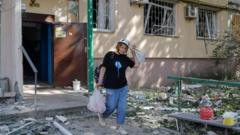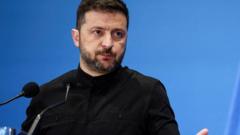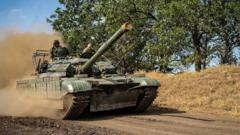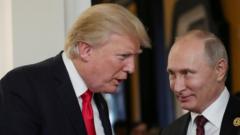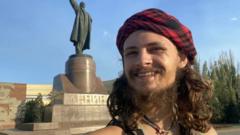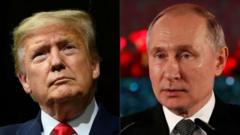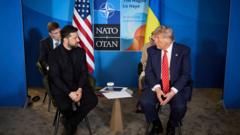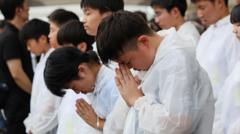Father Moses McPherson's emotionally charged sermons on masculinity have attracted significant conversions to the Russian Orthodox Church in the US, particularly among young men struggling with contemporary societal dynamics. This trend highlights a cultural shift toward traditional values, challenging modern norms and political perceptions.
Young American Men Flock to Russian Orthodoxy in Search of Traditional Masculinity
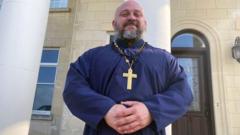
Young American Men Flock to Russian Orthodoxy in Search of Traditional Masculinity
A rising trend among young men in the United States shows a growing interest in Russian Orthodoxy, emphasizing traditional masculinity and family values amidst modern societal challenges.
Father Moses McPherson's congregation in Georgetown, Texas, has seen its numbers triple over the past 18 months, driven largely by young men seeking a return to traditional masculinity. In his energetic online presence, the priest advocates for a virile, unapologetic manliness that dismisses activities like wearing skinny jeans or crossing legs as overly feminine. As a former Protestant, McPherson now leads the Russian Orthodox Church Outside Russia (ROCOR), leveraging social media to draw in a burgeoning community of followers.
Many of his converts, like Theodore, an engineer who felt unfulfilled despite his apparent success, express dissatisfaction with contemporary societal narratives about masculinity. They perceive society as harshly critical of traditional male roles, particularly the expectations of being breadwinners. In stark contrast, they embrace a belief in conventional family structures and the importance of prioritizing home life.
Educator Father John Whiteford emphasizes the role of home-schooling in preserving religious values and safeguarding children from what he calls "liberal" influences. This wave of new converts, predominantly men, aligns with broader political and cultural shifts in America, especially as many individuals convert from other faiths during the pandemic.
The numbers of Orthodox Christians have notably shifted, with the Pew Research Centre reporting an increase in male adherents to 64%. Scholars like Professor Scott Kenworthy observe similarly heightened interest across various parishes, indicating that this trend transcends specific communities.
The digital arena has been instrumental in catalyzing this movement, as demonstrated by Father Moses's flourishing online following. He encourages families to prioritize religious devotion, procreation, and dismissal of birth control, claiming that focused connections resist Western feminization.
Although Orthodox communities represent a small fraction of Christian practitioners in the United States, their rise mirrors a counter-movement against the pervasive influence of self-identified liberal ideologies. Converts often cite a sense of belonging and stability in the traditionally structured practices of the Orthodox Church.
Figures such as Buck Johnson demonstrate how their journeys toward Orthodoxy reshape their perspectives on global issues, particularly contrasting U.S. and Russian narratives. While the portrayal of Russia often leans negative in American media, these converts find a community that fosters long-term values over transient consumerism.
Amidst the complexities of modern life, a segment of American youth appears increasingly attracted to the disciplined, traditional doctrine of Russian Orthodoxy, revealing a noteworthy cultural resurgence focused on masculinity, faith, and family unity.

